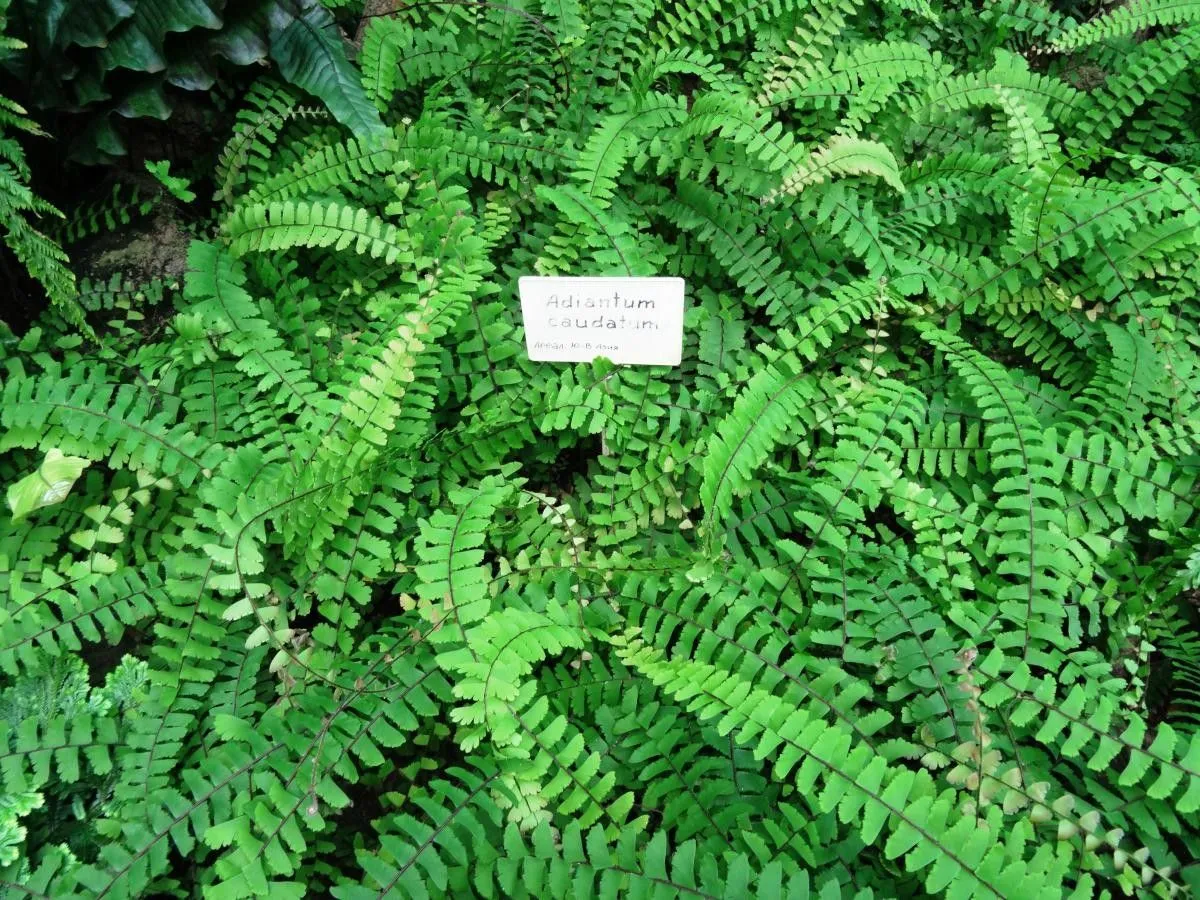
Author: L.
Bibliography: Mant. Pl. 2: 308 (1771)
Year: 1771
Status: accepted
Rank: species
Genus: Adiantum
Vegetable: Unknown
Observations: Trop. & Subtrop. Asia to SW. Pacific
The Tailed Maidenhair, scientifically known as Adiantum caudatum, is a fascinating fern belonging to the Pteridaceae family. First described in scientific literature as early as 1771, this plant bears the signature touch of its identifier, L. The Tailed Maidenhair possesses a distinct elegance that manifests in its unique fronds, which carry an almost whimsical appearance due to their delicate, trailing ends.
This fern finds its home across a broad geographical range, spanning from tropical to subtropical regions of Asia and extending to the southwestern Pacific. Such a widespread distribution underscores its adaptability and resilience in various climatic conditions. Typically thriving in humid, shaded areas, Adiantum caudatum can often be found gracing the forest floors, rocky crevices, and riverbanks, where moisture levels are ample.
What sets the Tailed Maidenhair apart are its elongated, arching fronds, which are dotted with small, bright green leaflets. These leaflets are thin and papery to the touch, creating a soft, feathery texture that captures the light in an enchanting way. The plant’s aesthetic appeal makes it a popular choice for ornamental gardening and indoor plant collections, where it can be grown in pots or hanging baskets to showcase its cascading growth habit.
Besides its visual charm, Adiantum caudatum holds cultural significance in various regions. It has been utilized in traditional medicine due to its purported health benefits. Though specifics of its medicinal uses can vary, common applications include remedies for respiratory issues and digestive disorders.
For plant enthusiasts and horticulturists, growing the Tailed Maidenhair fern is both a delight and a challenge. It demands a careful balance of indirect sunlight, high humidity, and well-drained soil. When these requirements are met, the plant rewards with vigorous growth and an enduring beauty.
In summary, the Tailed Maidenhair (Adiantum caudatum) is a versatile and enchanting fern that enriches the biodiversity of the regions it inhabits. Its combination of aesthetic grace and practical uses continues to make it a valued species among plant lovers and botanists alike.
Eng: tailed maidenhair
En: Tailed maidenhair
Ar: برشاوشان مذيل
Zh: 鞭葉鐵線蕨
Fi: Ituadiantumi
Zh-tw: 鞭葉鐵線蕨
Taken Oct 21, 2022 by Khalid Husain (cc-by-sa)
Taken May 28, 2019 by Tela Botanica − Alain Bigou (cc-by-sa)
© copyright of the Board of Trustees of the Royal Botanic Gardens, Kew.
© copyright of the Board of Trustees of the Royal Botanic Gardens, Kew.
© copyright of the Board of Trustees of the Royal Botanic Gardens, Kew.
Family: Myrtaceae Author: (F.Muell.) K.D.Hill & L.A.S.Johnson Bibliography: Telopea 6: 402 (1995) Year: 1995 Status:…
Family: Rubiaceae Author: Pierre ex A.Froehner Bibliography: Notizbl. Bot. Gart. Berlin-Dahlem 1: 237 (1897) Year:…
Family: Sapindaceae Author: Koidz. Bibliography: J. Coll. Sci. Imp. Univ. Tokyo 32(1): 38 (1911) Year:…
Family: Asteraceae Author: A.Gray Bibliography: Pacif. Railr. Rep.: 107 (1857) Year: 1857 Status: accepted Rank:…
Family: Fabaceae Author: Medik. Bibliography: Vorles. Churpfälz. Phys.-Ökon. Ges. 2: 398 (1787) Year: 1787 Status:…
Family: Aspleniaceae Author: (Cav.) Alston Bibliography: Bull. Misc. Inform. Kew 1932: 309 (1932) Year: 1932…